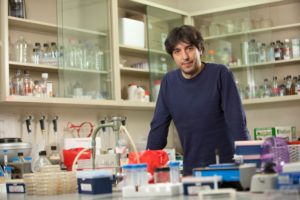
Chief Medical Officer admits Whooping Cough lies informed No Jab Pay/Play

The National Immunisation Conference was held in Adelaide in June 2018. Linked below are three video panel discussions/presentations which should be of particular interest to the freedom of choice community. Links to all other available video panel discussions/presentations are at the bottom of this page.
Anyone who has been following this issue for any length of time would not be surprised to discover that the McCafferys’ and Hughes’ predatory and dishonest campaigns were largely responsible for both the federal No Jab No Pay and state-based No Jab No Play laws.
Of course, they didn’t do it alone – government doctors and scientists, vaccine manufacturers, lobby groups and a complicit media all played a role in the hijacking of Australian vaccine policy.
Their campaigns were predicated on multiple falsehoods, which our time-poor elected leaders fell for, hook, line and sinker. These include:
Whooping Cough is easily preventable by vaccination.
Whooping Cough deaths have increased.
No baby should die from Whooping Cough in this day and age, in a wealthy country like Australia, and that if only everyone was vaccinated, there would be no deaths from Whooping Cough.
Vaccination rates are plummeting.
Conscientious objection rates had sky-rocketed.
Whooping Cough was virtually eradicated but “has made a terrible comeback” due to the aforementioned plummeting vaccination rates.
The high Whooping Cough notification rate in the Northern Rivers of New South Wales is due to the low vaccination rate in that region (rather than diagnostic suspicion bias).
Criticism of them and their campaigns constitutes harassment, even when such criticism is published on our own forum.
As we know, all of the above are false, and the McCafferys and Hughes know this, yet continue to promote these lies to this day.
https://avn.org.au/2018/09/cmo-admits-whooping-cough-lies-informed-no-jab-pay-play/
National Geographic Shark – Pic Of The Year

Son of a gun, what a sensational pic!
Ventriloquist Megan Piphus: You Don’t Own Me & I Will Always Love You
DAPL Fail

They were oh so right!
Aluminium Toxicity Sources

NutriBlast Protein Blend
https://www.healthelicious.com.au/NutriBlast-Protein-Blend.html

This site was one of many I looked at to obtain data on what to include in my new protein blend. It has some useful data on digestive enzymes that may be of assistance to you in areas other than protein digestion so I am including it here for your reference. The article is well-referenced and concise. Here are some extracts from it that relate to protein absorption.
Many organs work together to make up your digestive system.
These organs take the food and liquids you eat and break them down into simpler forms, such as proteins, carbs, fats and vitamins. The nutrients are then transported across the small intestine and into the bloodstream, where they provide energy for growth and repair.
Digestive enzymes are necessary for this process, as they break down molecules like fats, proteins and carbs into even smaller molecules that can be easily absorbed.
There are three main types of digestive enzymes:
Proteases: Break down protein into small peptides and amino acids
Lipases: Break down fat into three fatty acids plus a glycerol molecule
Amylases: Break down carbs like starch into simple sugars
Enzymes are also made in the small intestine, including lactase, maltase and sucrase.
If the body is unable to make enough digestive enzymes, food molecules cannot be digested properly. This can lead to digestive disorders like lactose intolerance.
Thus, eating foods that are high in natural digestive enzymes can help improve digestion.
Here are 12 foods that contain natural digestive enzymes.
1. Pineapple
Pineapples are a delicious tropical fruit rich in digestive enzymes.
In particular, pineapples contain a group of digestive enzymes called bromelain.
These enzymes are proteases, which break down protein into its building blocks, including amino acids. This aids the digestion and absorption of proteins.
Bromelain can be purchased in powdered form to help tenderize tough meats. It’s also widely available as a health supplement to help people who struggle to digest proteins.
A study on people with pancreatic insufficiency, a condition in which the pancreas cannot make enough digestive enzymes, found that taking bromelain combined with a pancreatic enzyme supplement improved digestion more than the enzyme supplement alone.
2. Papaya
Papaya or pawpaw is another tropical fruit that is rich in digestive enzymes.
Like pineapples, papayas also contain proteases that help digest proteins. However, they contain a different group of proteases known as papain.
Papain is also available as a meat tenderizer and digestive supplement.
Studies have shown that taking a papaya-based formula may help ease digestive symptoms of IBS, such as constipation and bloating.
If you want to eat papayas, just make sure to eat them ripe and uncooked, as heat exposure can destroy their digestive enzymes.
Also, unripe or semi-ripe papayas can be dangerous for pregnant women, as it may stimulate contractions.
11. Kiwifruit
The kiwifruit is an edible berry that is often recommended to ease digestion.
It’s a great source of digestive enzymes, particularly a protease called actinidain. This enzyme helps digest proteins and is commercially used to tenderize tough meats.
Additionally, kiwifruit contains many other enzymes that help ripen the fruit.
Scientists believe actinidain is one reason why kiwifruits seem to aid digestion.
An animal study found that adding kiwifruit to the diet improved the digestion of beef, gluten and soy protein isolates in the stomach. This was thought to be due to its actinidain content.
Another animal study analyzed the effects of actinidain on digestion. It fed some animals kiwifruit with active actinidain and other animals kiwifruit without active actinidain.
Results showed that animals fed kiwifruit with active actinidain digested meat more efficiently. The meat also moved faster through the stomach.
Many human-based studies have also found that kiwifruit aids digestion, reduces bloating and helps relieve constipation.
12. Ginger
Ginger has been a part of cooking and traditional medicine for thousands of years.
Some of ginger’s impressive health benefits may be attributed to its digestive enzymes.
Ginger contains the protease zingibain, which digests proteins into their building blocks. Zingibain is used commercially to make ginger milk curd, a popular Chinese dessert.
Unlike other proteases, it’s not often used to tenderize meats, as it has a short shelf life.
Food sitting in the stomach for too long is often thought to be the cause of indigestion.
Studies in healthy adults and those with indigestion show that ginger helped food move faster through the stomach by promoting contractions.
Animal studies have also shown that spices, including ginger, helped increase the body’s own production of digestive enzymes like amylases and lipases.
What’s more, ginger appears to be a promising treatment for nausea and vomiting.
https://www.healthline.com/nutrition/natural-digestive-enzymes
Gil Hedley On Fuzz

WARNING: This video contains images of cadavers but has some very important data on the “use it or lose it” theme.
https://www.gofitnow.com/the-fuzz-speech-pain-movement-massage/
What to know about fasting, aging, the ‘longevity diet‘ and when you should eat

Seems I have been doing it wrong. Not eating for 14-16 hours. Here’s the right way to do it!
https://news.usc.edu/135551/fasting-aging-dieting-and-when-you-should-eat-valter-longo/
(27 June 2024 Subsequent research reveals endocrine imbalances occur when you consistently go for longer than 12 hours without food.)
Epigenetic Memories Passed 14 Generations

This article has GREAT content but a severe drawback is that an extremely high level of understanding of genetics and biology is required to fully comprehend it without extensive use of the dictionary. In the first two sections I counted 17 words just for which off the top of my head I could not give an accurate definition. I commented on the article that if you are writing to communicate to the general public and not just biologists you would be well advised to either define the technical words used or keep the target audience in mind and phrase accordingly.
So here’s the synopsis.
The genes you inherit from your parents account for only 10-16% (depending on whom you quote) of your health outcomes. Whether diet, lifestyle choices, environmental factors and toxins “turn on” or cause those genes to be expressed, is 84-90% of the deal.
…the Centers for Disease Control (CDC) states that genetics account for only 10% of disease, with the remaining 90% owing to environmental variables. An article published in the Public Library of Science One (PLoS One) entitled “Genetic factors are not the major causes of chronic diseases” echoes these claims, citing that chronic disease is only 16.4% genetic, and 84.6% environmental. These concepts make sense in light of research on the exposome. (Definition: The exposome encompasses the totality of human environmental (i.e. non-genetic) exposures from conception onwards, complementing the genome, first proposed in 2005 by a cancer epidemiologist. The cumulative measure of all the environmental insults an individual incurs during their life course that determines susceptibility to disease.)
For instance some heart drugs have been found to cause gene changes that lead to lupus.
Genes Might Load the Gun But Environment Pulls the Trigger
Pharmaceuticals, however, are not the only agents that can induce epigenetic disturbances. Whether you were born via vaginal birth or Cesarean section, breastfed or bottle-fed, raised with a pet in the house, or infected with certain childhood illnesses all influence your epigenetic expression. Whether you are sedentary, pray, smoke, mediate, do yoga, have an extensive network of social support or are alienated from your community—all of your lifestyle choices play into your risk for disease operating through mechanisms of epigenetics.
In delineating the totality of exposures to which an individual is subjected over their lifetime, the exposome can be subdivided into three overlapping and intertwined domains. One segment of the exposome called the internal environment is comprised of processes innate to the body which impinge on the cellular environment. This encompasses hormones and other cellular messengers, oxidative stress, inflammation, lipid peroxidation, bodily morphology, the gut microbiota, aging and biochemical stress.
Another portion of the exposome, the specific external environment, consists of exposures including pathogens, radiation, chemical contaminants and pollutants, and medical interventions, as well as dietary, lifestyle, and occupational elements.
At an even broader sociocultural and ecological level is the segment of the exposome called the general external environment, which may circumscribe factors such as psychological stress, socioeconomic status, geopolitical variables, educational attainment, urban or rural residence, and climate.
Transgenerational Inheritance of Epigenetic Change: Endocrine Disruptors Trigger Infertility in Future Generations
Scientists formerly speculated that epigenetic changes disappear with each new generation during the formation of sperm and ovum, and after fertilization. This theory was first challenged by research published in the journal Science which demonstrated that transient exposure of pregnant rats to the insecticide methoxychlor, an estrogenic compound, or the fungicide vinclozolin, an antiandrogenic compound, resulted in increased incidence of male infertility and decreased sperm production and viability in 90% of the males of four subsequent generations that were tracked.
Most notably, these reproductive effects were associated with derangements in DNA methylation patterns in the germ (sperm and eggs) line, suggesting that epigenetic changes are passed on to future generations. The authors concluded, “The ability of an environmental factor (for example, endocrine disruptor) to reprogram the germ line and to promote a transgenerational disease state has significant implications for evolutionary biology and disease etiology”. This may suggest that the endocrine-disrupting, fragrance-laden personal care products and commercial cleaning supplies to which we are all exposed may trigger fertility problems in multiple future generations.
Reactions to Toxins and Environmental Stressors Passed to Next Generation
…The study suggests that certain characteristics of the parental sensory environment experienced before conception can remodel the sensory nervous system and neuroanatomy in subsequently conceived generations…
…exposures to certain stressors such as starvation during the gestational period are associated with poor health outcomes for offspring. Women who undergo famine before conception of her offspring have been demonstrated to give birth to children with lower self-reported mental health and quality of life, for example…

